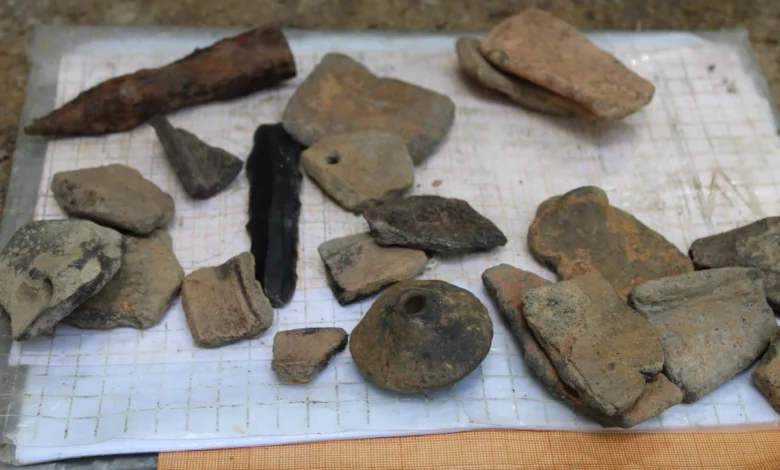
The first and only, so far, excavations were carried out here back in 1987.
Scientists of the Institute of Ukrainian Studies named after I. Krypyakevych of the National Academy of Sciences of Ukraine and the Historical and Cultural Reserve “Stilske Gorodishche” conducted a joint archaeological expedition in the village of Iliv at the Pechera settlement. The excavations lasted for three weeks, in the process it was possible to explore 3 chronological horizons of the monument: the Eneolithic period – the culture of ware pottery (IV millennium BC), the Early Iron Age (late II – early I millennium BC). e.) and the princely era (X-XIII centuries). The head of the expedition was the researcher of the Department of Archeology of the Institute of Ukrainian Studies Andrii Gavinskyi, together with him, six other scientists worked at the monument.
The most valuable find was a rectangular ground structure located on the edge of a small fortified settlement. It is 12 m long and 4 m wide, traces of dug-in pillars can be traced along the perimeter after 1-2 m.
“We are not talking about dating at the moment – we have to study all the finds more carefully. But if we tie this building to a pre-Christian temple, then it will be about the 10th century. We believe that at first this settlement was a sanctuary, later it obviously lost this function with the introduction of Christianity, and later it could be used as a storage settlement for those villages that are recorded around this mountain – in the valley of the Ilovets River. The building was not residential, but had a public purpose: this is evidenced by the absence of traces of a hearth, a small number of fragments of pots. People could gather here to make important decisions, perform ritual actions,” says Andriy Gavinskyi.
In total, during the research, the scientists discovered six immovable objects: the remains of an Eneolithic house and a farm pit of the Eneolithic ware culture; a large ground structure (which was discussed in the material above) and three farm pits of the princely period. And also more than a thousand movable objects: fragments of dishes, flint tools, weapons.
“To excavate such a settlement, and to find objects there, is a great fortune, it is a rarity. In addition, this is not such an ordinary fortress of defensive purpose – it had a different function, let’s say, sacred for that time. For such a small area, the size of the hillfort is approximately 40 by 40 meters, the results of excavations are very rich! Potentially, they can change the interpretation of the monument – such large ground structures are very rare. Similar structures occur mainly in Bukovina. And this will be the first well-researched sanctuary settlement in the Upper Dniester region,” adds Andriy Havinskyi.
The new archaeological findings complement the findings of the first excavations conducted here in 1987 by Boris Tymoshchuk and Iryna Rusanova. They give an idea of the appearance of the settlement and its construction. According to Iryna Ivanochko, director of the Historical and Cultural Reserve “Stilske Gorodishche”, after the necessary processing of the found materials, the reserve plans to make a temporary exhibition.
“Protecting and popularizing archaeological sites is always the most difficult. This is not a building – everything valuable is underground, it is not visible. That is why it is so important that the reserve takes the initiative and makes a lot of effort to find, research and demonstrate this archaeological heritage. Many work with children: they conduct quests, excursions, visit schools in the region. It’s interesting and it helps to understand why archeology is important,” comments Olena Vasylko, director of the Department of Architecture and Urban Development of the Lviv OVA.
To the Archaeologist’s Day, which was celebrated in Ukraine on August 15, an excursion was held for local children at the excavation site.

